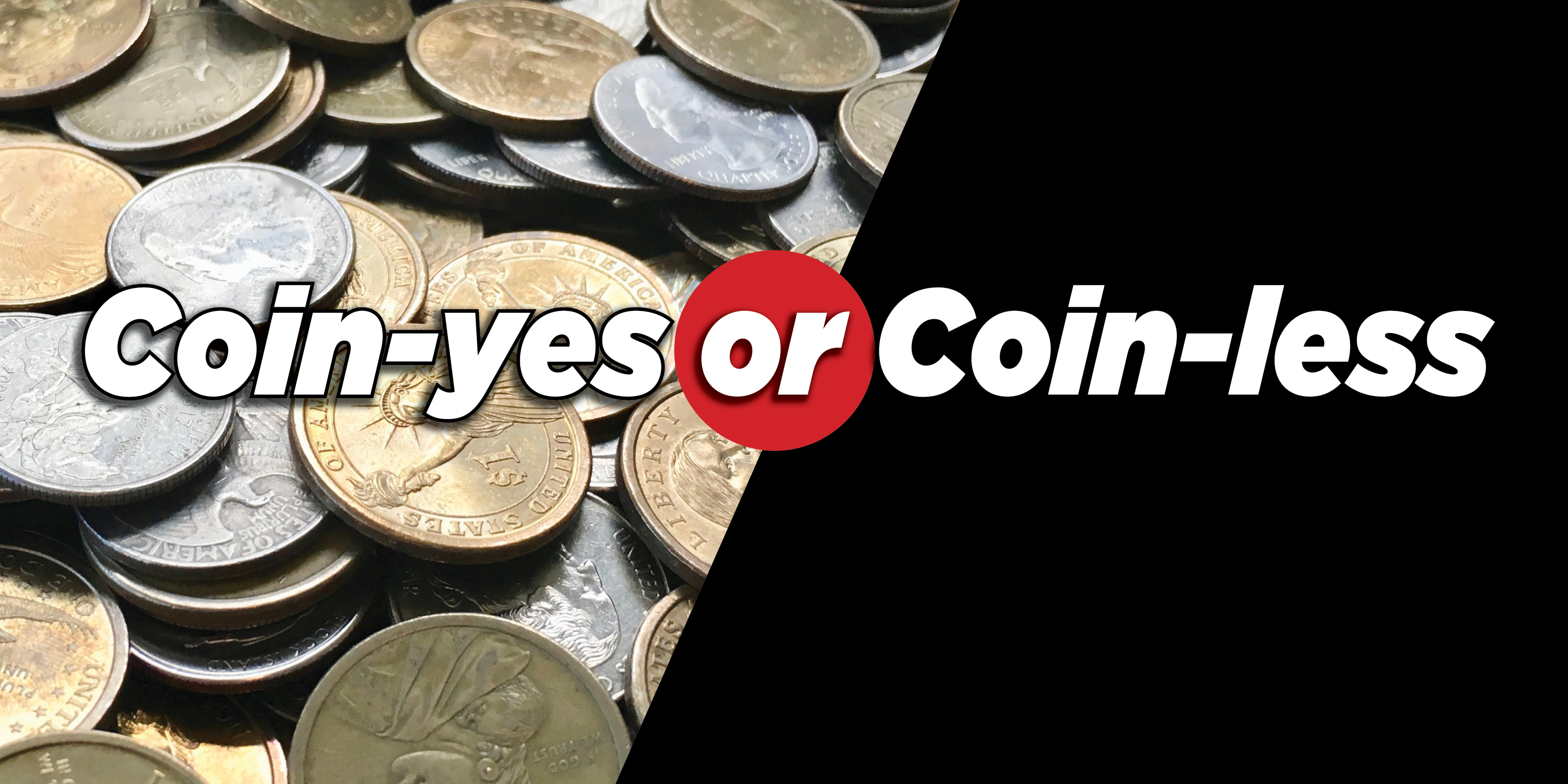Coin-yes or coin-less

What is it about coin-op pay?
First there was July’s full-page magazine ad from a prominent card system supplier portraying a young store owner pulling out his hair alongside the question: “Why are you still torturing and limiting yourself with coin?!”
Then in August a popular Facebook group lit up when a card advocate characterized coin — and anybody offering it — as a dinosaur.
And that same month an industry roundtable on payment trends excluded coin reps after the trade publication only “sought the input of companies that offer products for payment acceptance beyond coins or tokens,” specifically “card-based or mobile-based.”
Talk about getting kicked to the curb.
Never mind that every survey to date has coin on offer at more laundromats than any other format. Or that polling shows two-in-three operators ringing up the majority of transactions at their washers and dryers with coin.
While the crowd shouts “coin-yes” critics chant “coin-less.”
Lost in all of this is coin-op’s simplicity, flexibility and technology. From automated change-making requiring no instructions or prompts to mixed denomination processing in seconds at every single machine.
Old school? Try good old-fashioned ingenuity.
Operators fire back
Laundromats have always been about freedom.
Customers pick machines, decide what goes inside and which soap gets poured. It’s their clothes, their time and their dime.
Owners get to choose everything from equipment mix to operating hours. It’s their store, their sweat and their money on the line.
Freedom also extends to payment. Operators offer various transaction methods directly at the machine’s point of sale — be it coin, token, plastic or digital — and customers select a favorite.
So it’s not surprising coin-op owners fired back on social media after being labeled prehistoric creatures for how they get paid.
“Some people still believe in freedom in America. And there is nothing free about using a card. So until you completely eliminate those freedom loving people there will still be coin laundries, grocery stores and gas stations that take cash,” wrote one operator.
“Quarters, tokens, dollar coins, CC, debit, App, ATM. I’ll take the money any way they want to give it to me,” another chimed in.
“Coin is still two-thirds of my sales. The people have spoken as far as I’m concerned,” responded a veteran owner.
Jumping on the coinless bandwagon
Decades ago we heard plastic would replace coin.
“People were having to use more and more quarters to the point where it became difficult and time-consuming for them,” John Hooper told the Associated Press in 1991 as he and his son Jeff rolled out Easy Card, laundry’s first-of-its-kind loyalty card payment system.
The duo envisioned coin-op’s circular world going rectangular.
Their mission wasn’t easy. Coin defined the laundromat experience. So much so that three top industry publications had it in their name.
Easy Card was eventually acquired by an equipment manufacturer, and soon other payment companies, along with one more OEM, jumped on the coinless bandwagon.
Distributors also saw big dollar signs and joined in, as did the national trade association. Retrofitting an industry with machine readers and wall kiosks sure looked enticing to those selling equipment or ad space.
But there was a problem: The pubic had grown attached to using change and wasn’t looking to take the coin out of coin laundry.
New tech or tried-and true?
Payment adoption is everything. First the store operators have to get on board, then customers.
Plastic was a tough sell. Sure, card marketers guaranteed 100% adoption with quarters blocked off, but would patrons embrace it or go elsewhere?
Coin-op owners found themselves caught between new tech and tried-and-true. A good number did convert, especially in the northeast where two of the major loyalty card players were based.
And while other markets saw alternative pay grow, coin still dominated the national landscape. Quarters remained card’s main foe.
Then in 2009 loyalty card abruptly flipped. Coins got put on the menu, joining bank-issued cards as part of new hybrid setups.
Did taking two types of plastic take out coin? No. Hybrids only underscored the consumer’s insatiable appetite for traditional pay.
Card pay even had a leg up as it all but ignored dollar acceptance. The choice on nearly every $8 wash was one swipe or 32 quarters, not 8 dollar coins.
Nevertheless, all those quarters kept rolling in.
Turning back the clock
Many who banked on coin disappearing are frustrated. Imagine going to all the trouble of installing expensive readers only to watch the lion’s share of revenue running through drops.
Rather than compete against coin some owners are exercising their freedom by removing the machine’s cash component.
Sure the clock is being turned back 15 years. Of course patrons can no longer pay with change. But all those coins get eliminated.
Would improving the efficiency of their hybrid with higher denomination dollar-valued coinage have made a difference?
We’ll never know. Better coin management isn’t telegraphed by alternative pay suppliers or the print media they support.
Both have a stake in seeing coin go away. Full-page ads for alt-pay systems during the past three months in both national industry publications equaled or surpassed those for washer/dryer manufacturers — once considered the trade magazine’s bread-and-butter advertiser.
There is hope however in of all places, social media. Leave it to laundromat owners to set the record straight. This month on Facebook they were asked where they stood on pay.
The poll results: 77% said “Coin-Yes” versus 23% “Coin-less.”
So much for torture and dinosaurs.

Laurance Cohen is part of the Imonex team and welcomes inquiries on innovative payment solutions for your business.
laurance@imonex.com
(954) 999-7785

